Oklahoma has a rich diversity of snakes, with over 40 different species across the snake. There are several common snakes, such as rat snakes, brown snakes, and water snakes. For the most part, these snake species are harmless and non-venomous.
However, the state does have seven types of venomous snakes, which belong to the pit viper family. This family also includes five species of rattlesnakes found in Oklahoma.
Luckily, most of these are not water snakes, so you won’t find them in lakes. However, cottonmouths are the exception to this rule. To learn more about these (and other snakes), keep reading.
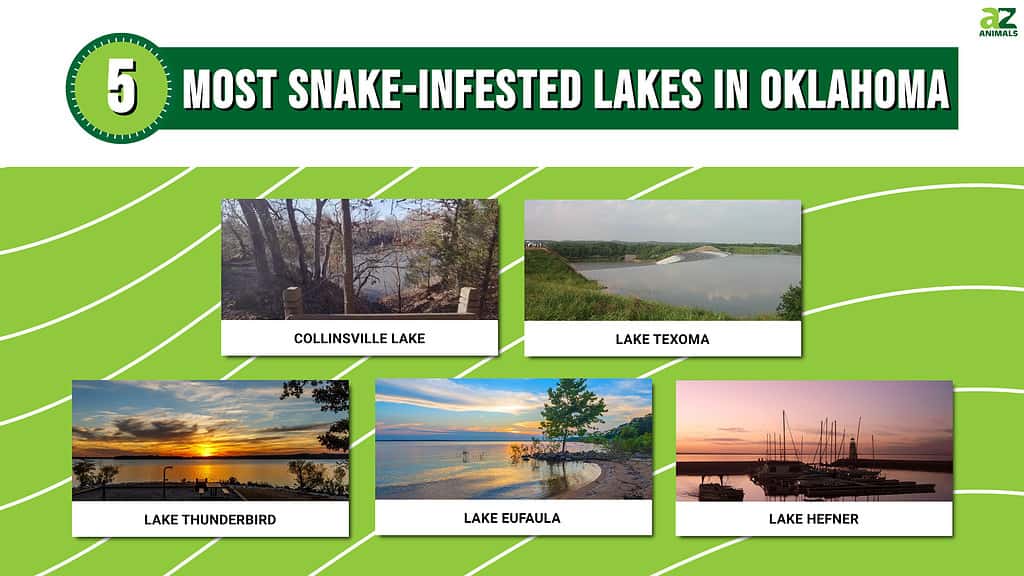
Water Snakes Found in Oklahoma Lakes
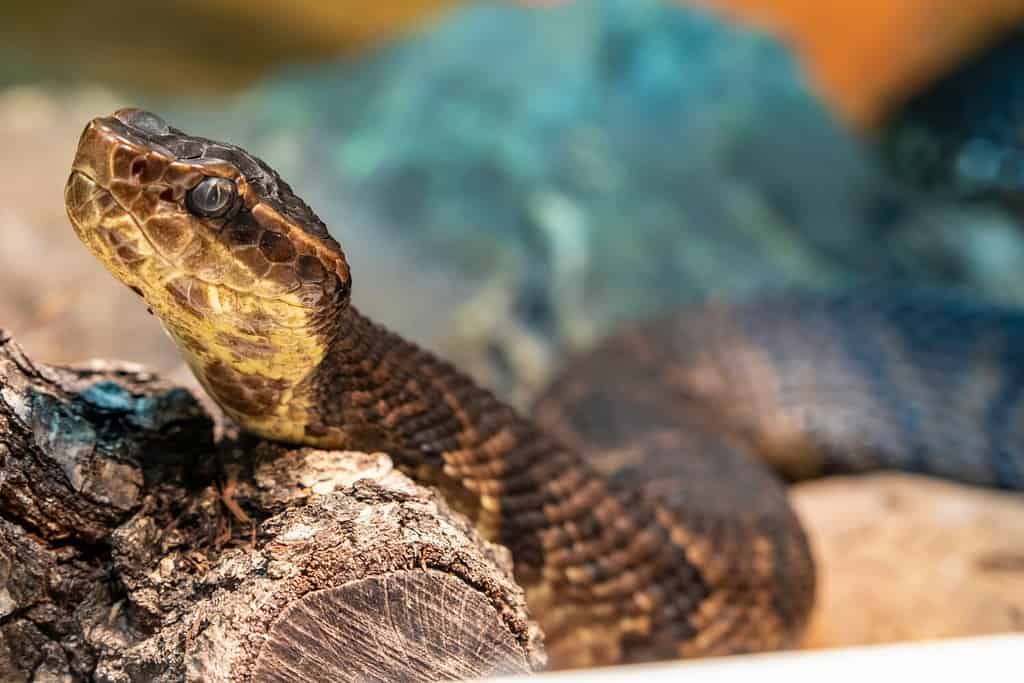
Cottonmouths are the only venomous water snake in Oklahoma.
©Danny Ye/Shutterstock.com
There are six types of water snakes you can find in Oklahoma. Five of these are harmless and belong to the genus Nerodia: the northern water snake, the diamondback water snake, the midland water snake, the plain-belled water snake, and the broad-banded water snake. All of these snakes consume fish, frogs, and other animals.
Different species prefer different habitats. However, you can find at least one of these snakes just about anywhere, including rivers, ponds, lakes, and even canals.
There is a singular species of venomous water snake in Oklahoma – the cottonmouth. This snake has a very thick body and dark coloration. The inside of their mouth is white, hence their name. They can grow up to 10 pounds and 74 inches long.
Cottonmouths live almost exclusively in the state’s eastern portion, preferring slow-moving and shallow water. They typically feed on frogs, rodents, birds, and fish. Sometimes, they may even eat other snakes. Their bite can be very dangerous and often requires veterinary attention.
Most Snake-Infested Lakes in Oklahoma
1. Collinsville Lake

Collinsville Lake is in Collinsville, Oklahoma, as you might guess. This lake covers 55 acres and gets about 25 feet deep in the deepest spot, making it prime ground for cottonmouths. It’s a reservoir, which means humans built it; it isn’t a natural lake.
Today, the lake offers many recreational activities. It has a mountain biking and hiking trail system covers about 2 miles. These trails offer scenic views of the lake (and may also allow you to see a lake).
These trails have varying difficulty ranges, ranging from intermediate to advanced.
Collinsville Lake is known for several types of wildlife, including cottonmouths. These snakes are venomous, but they don’t usually attack unless threatened. They can be found in the marshy area around Collinsville and in the water itself. You may also see water snakes, garter snakes, and rattlesnakes in the area.
2. Lake Texoma
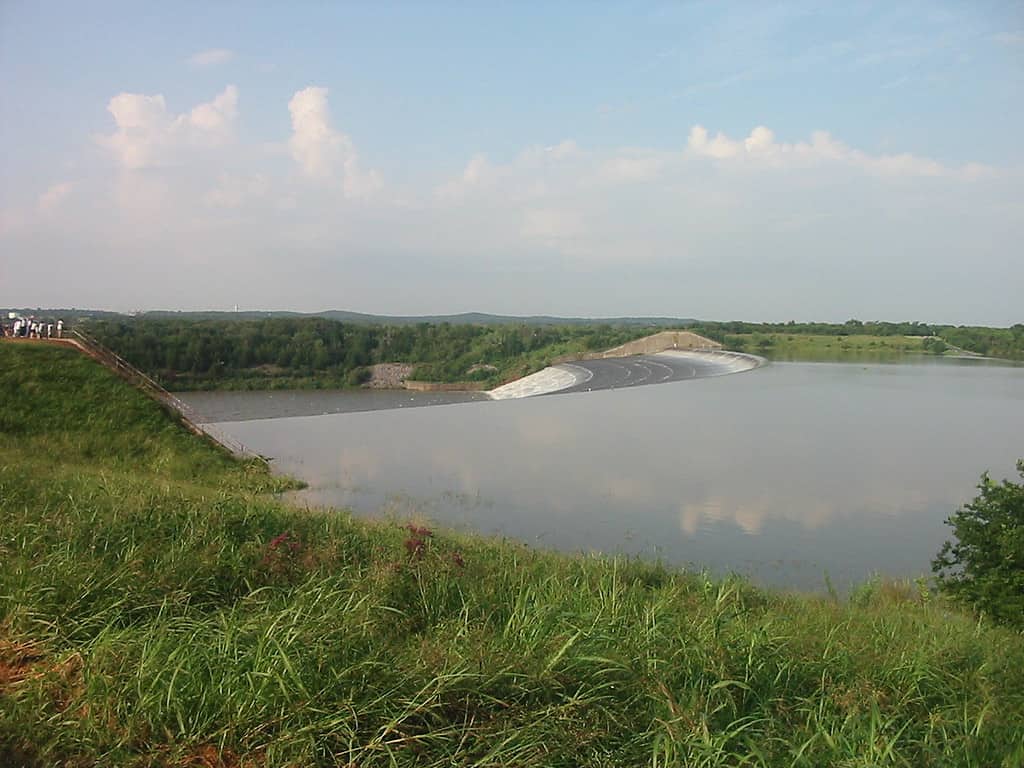
At 89,000 acres, Lake Texoma is one of the largest lakes in the U.S.
©Brendajane / Public Domain – License
Lake Texoma is a rather large reservoir that’s located between Oklahoma and Texas. It was formed by Denison Dam, which dammed up the Red River, creating the 89,000-acre lake. It was created in 1944 and is one of the largest lakes in the United States.
Thanks to its large size, the lake is also a popular destination for recreation, such as fishing, boating, and camping. It attracts around 6 million visitors annually and has many facilities to accommodate them.
For instance, it has two wildlife refuges, two state parks, 54 USACE-management areas, and 23 commercial campgrounds. There are plenty of places to go on the lake and several marinas, resorts, and cabins.
The lake is also known for its diverse wildlife, including several species of snakes. You can find water snakes of all sorts, including cottonmouths. There are several species of venomous and non-venomous snakes. You may see these fish in the water or the surrounding area.
3. Lake Thunderbird
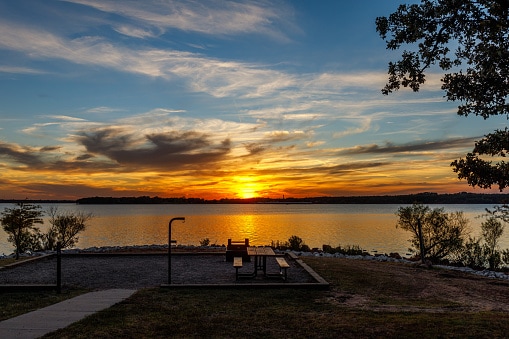
Lake Thunderbird, a man-made reservoir, is a popular location for recreation with its campsites, lake huts, hiking trails, and riding stables.
©Wirestock/ via Getty Images
Lake Thunderbird is a reservoir in Norman, Oklahoma. It was created using an earthfill dam on the Little River, leading to the almost 6,000-acre lake. Its purpose was the provide municipal water to the nearby communities.
While it was originally made for water, it is also a popular location for recreation. It has campsites, lake huts, hiking trails, and riding stables. There is even a nature center where you can attend educational programs.
Like most wildlife areas, the lake is home to several snakes, including water snakes. There are several species local to the area, so you may see them around the lake or in the water itself.
4. Lake Eufaula
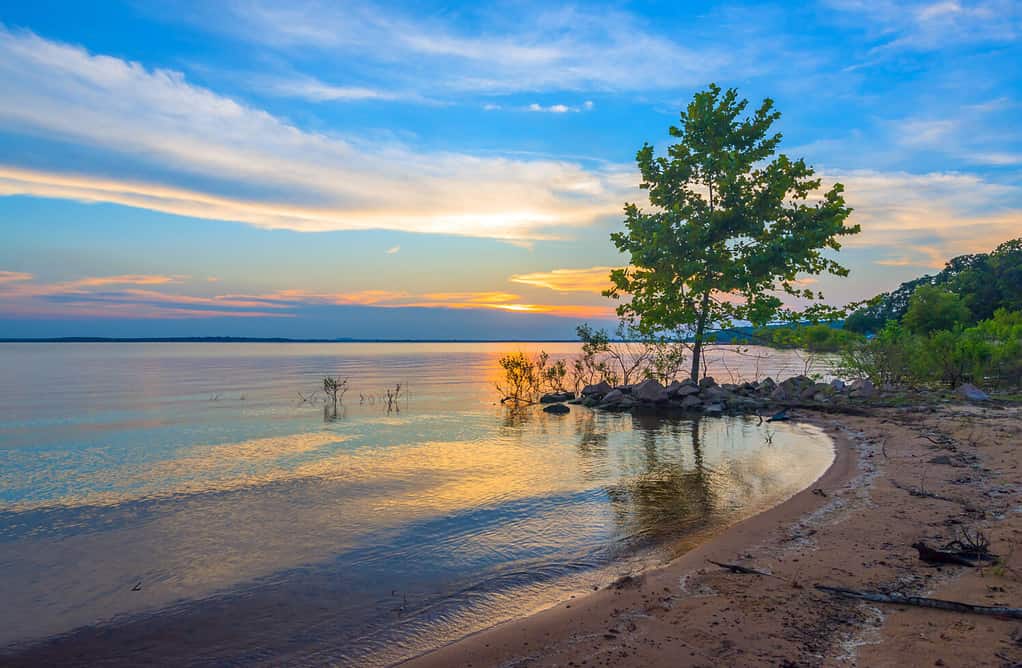
Lake Eufaula is one of the more snake-infested lakes in Oklahoma.
©JohnDSmith/Shutterstock.com
Lake Eufaula is a reservoir on the Canadian River that’s slightly upstream from where it meets the Arkansas River. As you might guess, it’s close to the town of Eufaula, which is how it got its name.
This lake was created using a dam, which provides flood control and water supply for the nearby area. The dam’s construction began in 1956 but wasn’t completed until 1964. It has over 102,000 surface acres and over 600 miles of shoreline.
Lake Eufaula has many recreational activities, including fishing, boating, and camping. There are lots of facilities on the lake for you to take advantage of.
However, the lake also has a sizable water snake population, largely because the lake is so big. These snakes can be found in the water and around the lake, especially in marshy areas.
5. Lake Hefner

-Lake Hefner is named after Robert A. Hefner, the mayor of Oklahoma City from 1939 to 1947.
©MARELBU / CC BY 3.0 – License
Lake Hefner also has a sizable water snake population. This lake was built in the 1940s to provide water to Oklahoma City (which, as you might guess, needs a lot of water). It was named after Robert A. Hefner, the mayor of Oklahoma City from 1939 to 1947.
It covers about 2,500 acres, though the water level does change.
This lake has tons of trails – around 9.5 miles in all. These trails are multi-use, which means they can be utilized by bikes and walkers.
Summary of the Most Snake-Infested Lakes in Oklahoma
| Lake | Snakes Found |
|---|---|
| Collinsville Lake | Cottonmouths |
| Lake Texoma | Water Snakes, Copperheads, Rattlesnakes |
| Lake Thunderbird | Water Snakes, Copperheads, Timber Rattlesnakes |
| Lake Eufaula | Water Snakes, Copperheads, Western Diamondback Rattlesnakes |
| Lake Hefner | Water Snakes, Garter Snakes, Rattlesnakes |
Other Animals Found Near Lakes in Oklahoma
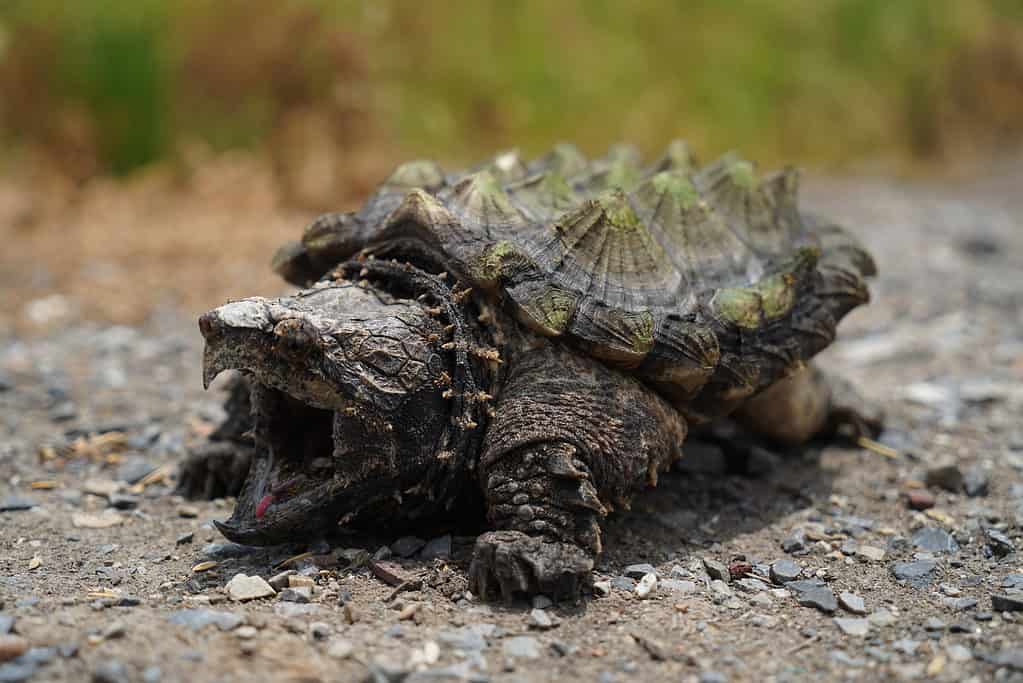
Alligator snapping turtles are common in Oklahoma.
©iStock.com/Sista Vongjintanaruks
Many other animals are found in Oklahoma around their lakes, as well.
For instance, alligator snapping turtles aren’t uncommon. They’re extremely large freshwater turtles that can weigh up to 250 pounds. Despite the name, these turtles are not related to alligators at all.
They have a hooked beak with three ridges on their shell. While they do have a powerful bite, they aren’t particularly aggressive towards people.
American alligators can also be found in Oklahoma. They are very large and can weigh up to 1,000 pounds. They live in the southeastern corner of Oklahoma. While alligators can be harmful to people, they can also be dangerous if provoked or threatened.
Beavers also live in Oklahoma’s lakes. While they can weigh up to 60 pounds, they aren’t particularly dangerous. They can cause damage by destroying trees and flooding areas. However, they don’t threaten people, usually.
Otters are similar to beavers in that they are semi-aquatic mammals. However, they only weigh up to 30 pounds. They live in eastern Oklahoma and are very playful. They eat fish, frogs, crayfish, and other aquatic animals. They’re very shy and elusive.
Sometimes, muskrats can also be found in Oklahoma. They build burrows and lodges, usually out of mud or vegetation. These small rodents only weigh about 4 pounds.
The photo featured at the top of this post is © Diane079F/Shutterstock.com
Thank you for reading! Have some feedback for us? Contact the AZ Animals editorial team.






